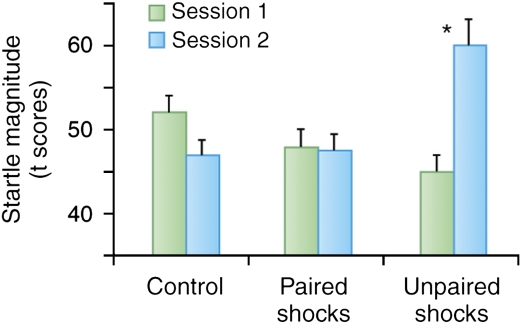Figure 1.
Context conditioning after paired CS shock (predictable shocks), unpaired CS shock (unpredictable shocks), and non-aversive conditionings (control) in a between-group design. During non-aversive conditioning, the US was a signal for button press. Subjects underwent conditioning in two experimental sessions separated by 4–5 days. Context conditioning was assessed by delivering startle stimuli at the beginning of sessions 1 and 2, before conditioning occurred. The figure shows that when subjects received unpaired CS–US, startle magnitude was significantly larger when they returned for testing (session 2) compared with before initial conditioning (session 1). In contrast, during the non-aversive condition, startle decreased (because of long-term habituation) between sessions 1 and 2. Startle magnitude in the paired CS–US condition was intermediate between these two conditions, suggesting weak context conditioning. *Significant difference in startle magnitude between sessions 1 and 2.

